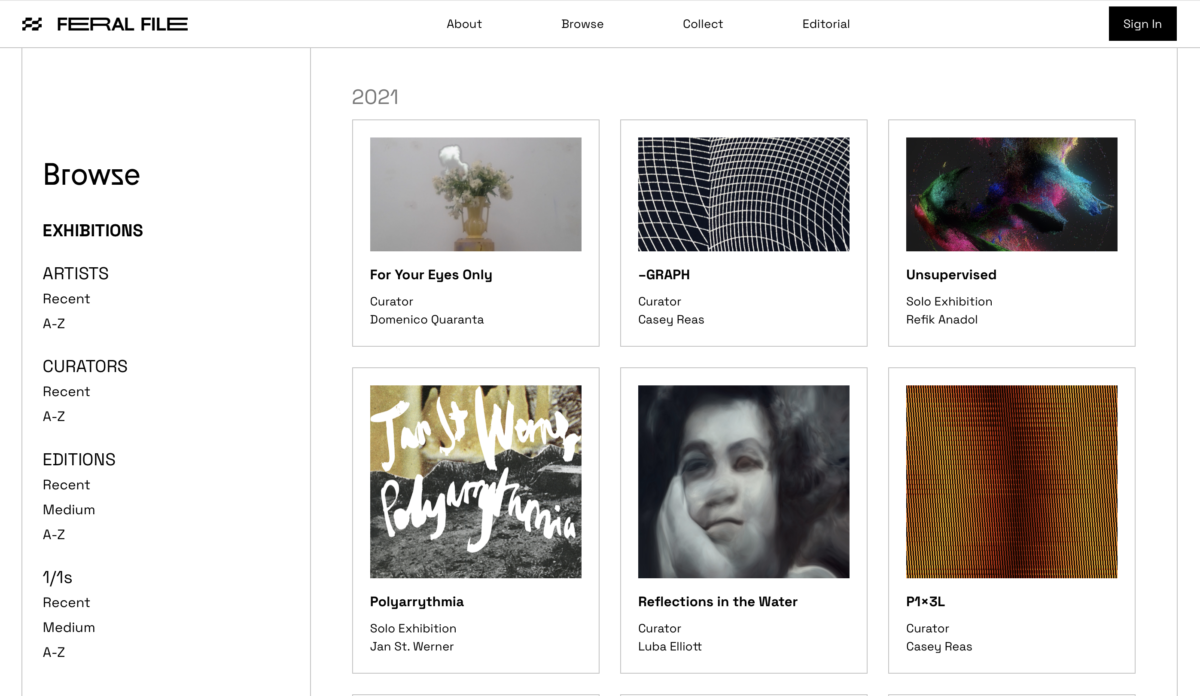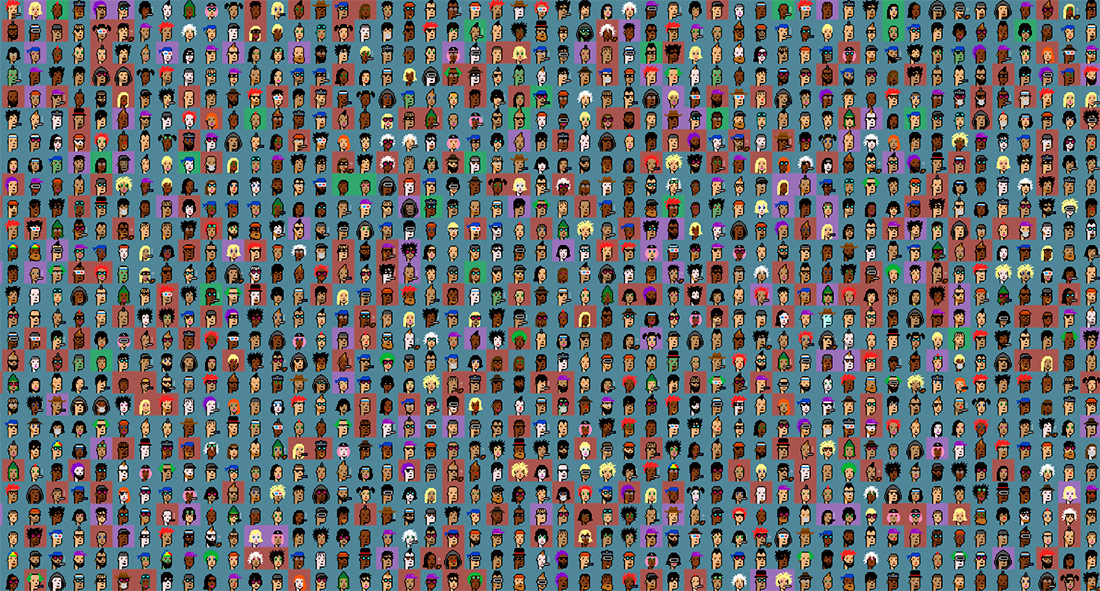
Article written in December 2021 for CCCB LAB
In a very short period of time, NFTs have shaken up the art market and generated a financial bubble. The use of blockchain technology overcomes an old problem for net art, but also brings with it new controversies such as its environmental impact. We analyse the causes of this phenomenon and how it might develop in the future.
Collins Dictionary recently announced that it has chosen the acronym NFT as its word of the year 2021. True to its role, Collins provides a concise definition of this term that has had such an impact on the contemporary art market in recent months: “non-fungible token: a unique digital certificate, registered in a blockchain, that is used to record ownership of an asset such as an artwork or a collectible”. Among the many ways in which NFTs have been described, the definition given by Collins has the value of clarifying a fact that has often led to confusion: an NFT is a certificate, not a type of artwork, nor a creative technique, nor an art movement. Just because something is minted on a blockchain as a non-fungible token does not make it a work of art, or even a work of digital art. NFTs do not really represent a transformation in the way artworks are created, nor do they embody a particular conceptual or aesthetic premise. It is not a technology that, in itself, provides artists with new means of expression or defines a visual style. Non-fungible tokens make it possible to certify the authenticity and ownership of a work of art in digital format (among other things), which is by nature infinitely reproducible, and this is their great contribution to the way in which some contemporary art is distributed, marketed and collected today.

Having clarified what an NFT is, one might wonder how a simple digital certificate could generate so much media buzz, disrupt the art market and fuel a financial bubble in barely eight months. It is a complex, multi-layered and nuanced story that does not lend itself to a simple explanation, let alone a complete one. From my perspective, and within the scope of my knowledge as an art historian, curator and researcher who has observed the evolution of the digital art market over the last two decades, I would like to offer some general keys to understanding how the NFT boom in the contemporary art market came about and what it bodes for the future of digital art.
